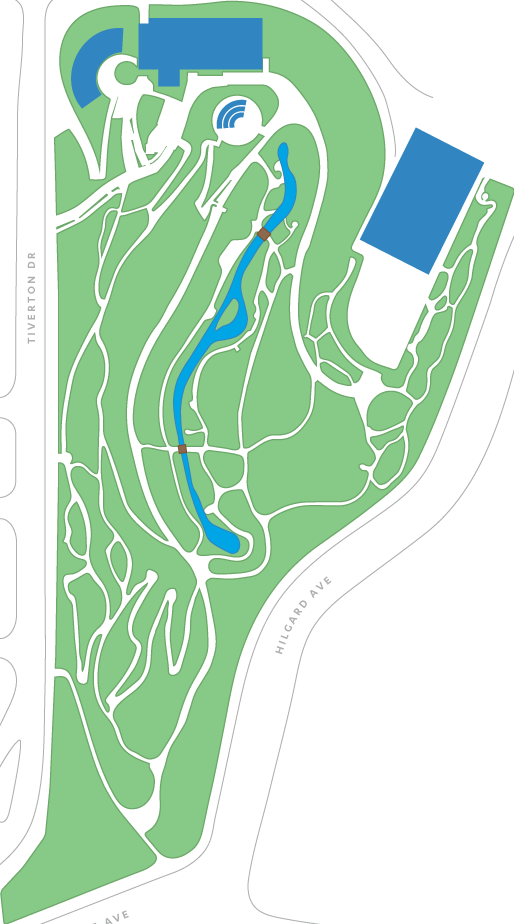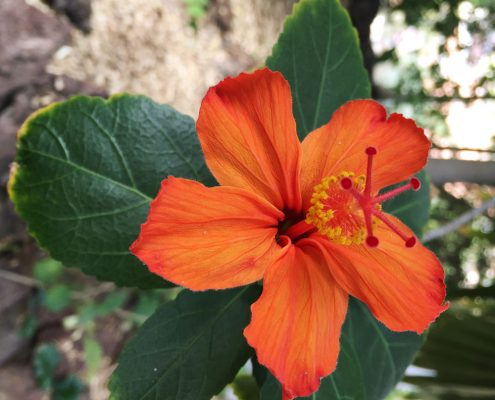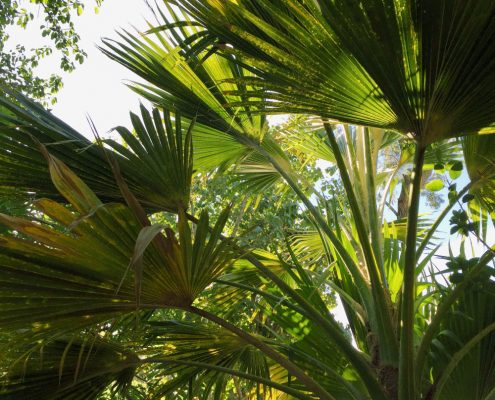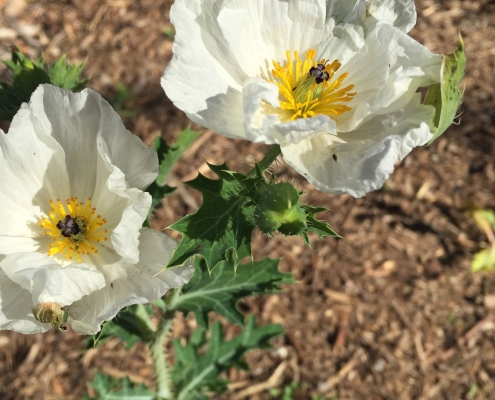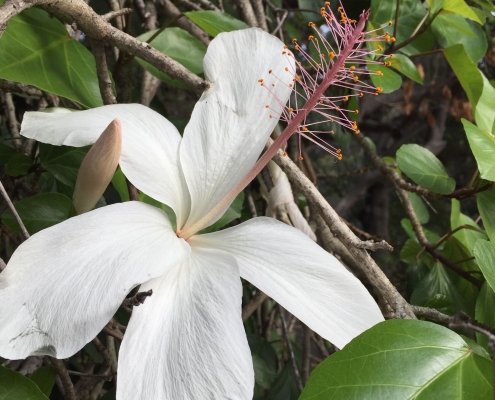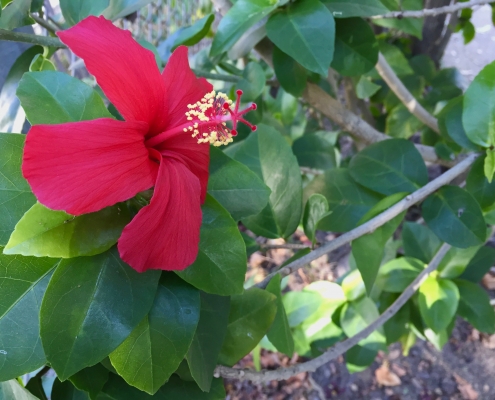![]()
Hawaiian Native Plants
The Hawaiian archipelago is one of the most remote island chains in the world. Millions of years of isolation from other lands have led to the evolution of diverse and distinctive plant life. Five species of Hibiscus are unique to the Islands and found nowhere else on Earth. Two of these species, H. arnottianus and H. waimeae, also here in our collection, are the only known Hibiscus to have a fragrant flower!
This collection also contains important cultural plants. Polynesian voyagers traveled by canoe with a botanical toolkit known as canoe plants. These plants provided the future Hawaiians with everything they needed to survive. Some of these plants might surprise you. Check out a few canoe plants in our collection below.
PLANTAS NATIVAS DE HAWÁI
El archipiélago hawaiano es una de las cadenas insulares más remotas del mundo. Millones de años de aislamiento de otras islas han resultado en la evolución de una flora única y diversa, o vida vegetal, de la región. El lecho de este jardín está construido sobre roca volcánica que semeja el flujo seco de lava volcánica. Árboles de Hibiscus nativas y Palmas del género Pritchardia, como la que se encuentra enfrente, pueden observarse aquí. Los especímenes de esta colección son generalmente de áreas secas de Hawái que, a diferencia de plantas de áreas más húmedas, pueden aclimatarse mejor al clima de nuestra región.
Explore Further
The volcanic landscapes of these islands are stunning and diverse, hosting a wide range of habitat types in a very small area. While the beauty and uniqueness of Hawaiian plants is exceptional, they are under threat from climate change, habitat loss and non-native species which compete for light, water and resources. A strong community of plant conservationists are working hard to preserve the unique plants of Hawai’i, often through direct human intervention such as removing non-natives, reintroducing natives, and maintaining seed banks of rare species.
A grant from the Stanley Smith Horticultural Trust has allowed for renovation of the irrigation system in this area. Garden staff are planning extensive new plantings throughout the Hawaiian Garden. A major focus will be on plants from the drier leeward sides of the islands, which are more adapted to the climate of Los Angeles than plants from other parts of the islands.
